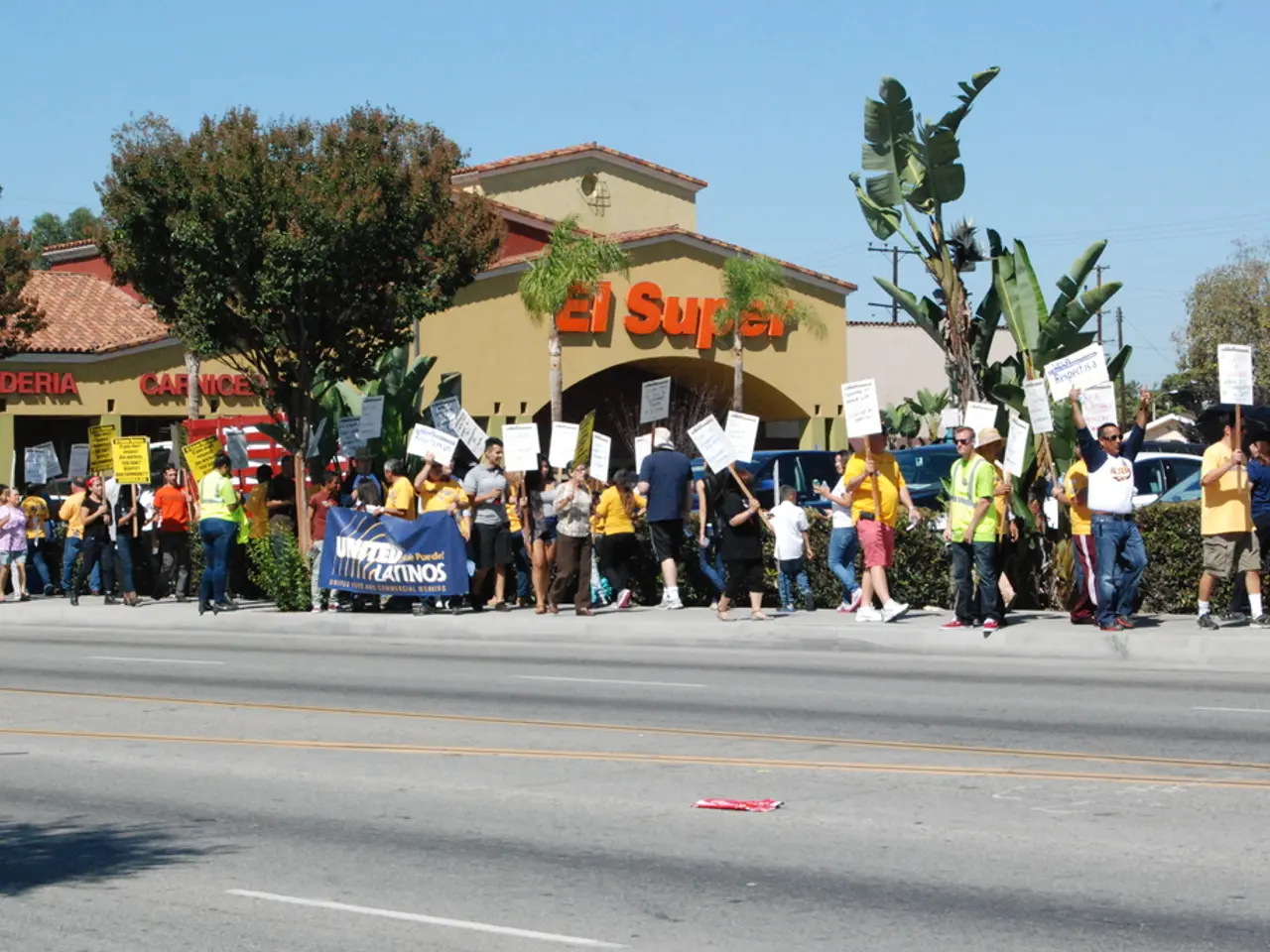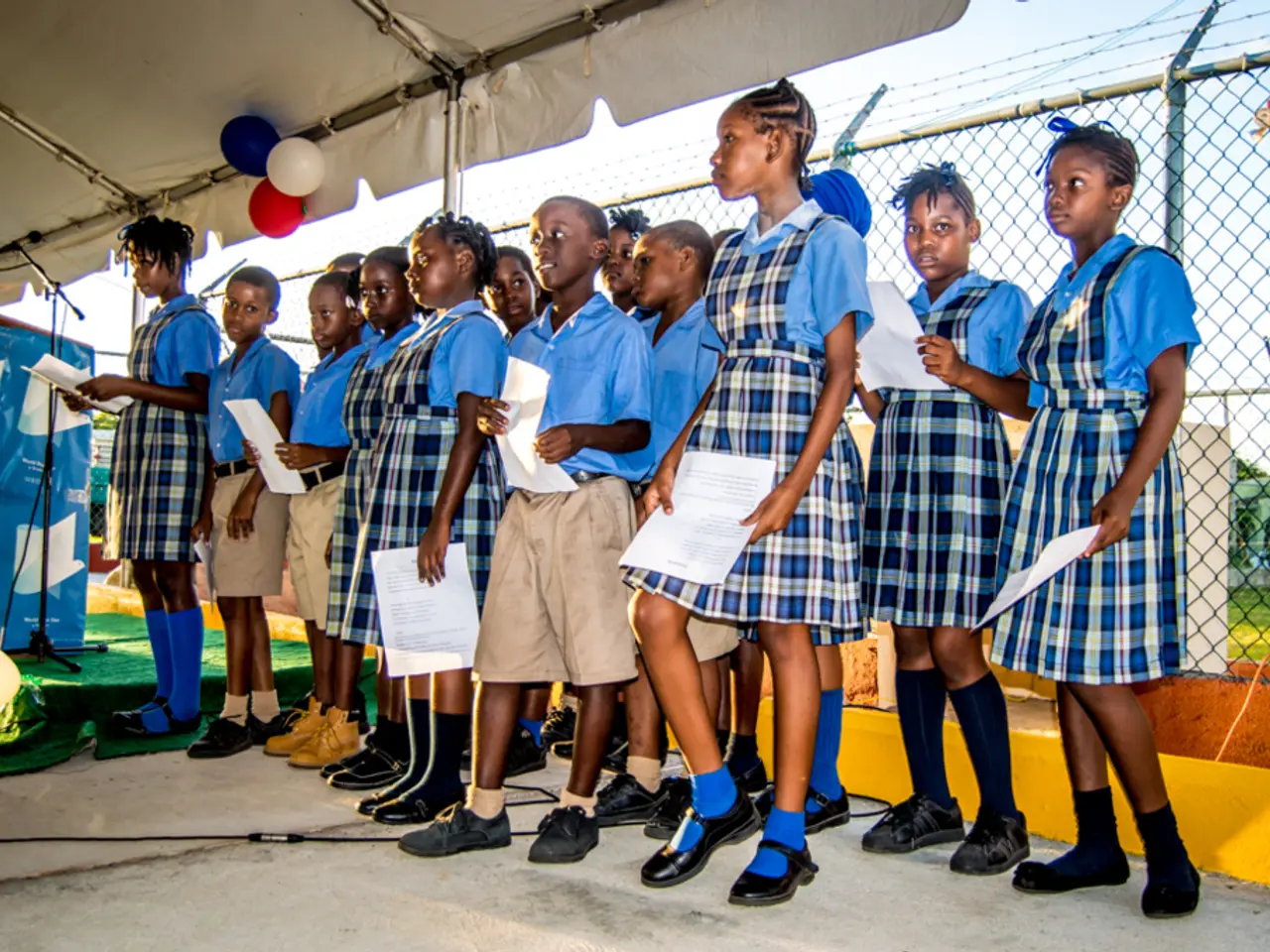Understanding the Significance of Local Political Movements: Unveiling the Importance of Grassroots Political Campaigns
Grassroots Campaigning: Empowering the People, One Voter at a Time
Grassroots campaigns are political movements started by ordinary people, using the power of their voices to support or change an issue. These bottom-up strategies, driven by local volunteers and community leaders, have become essential in modern politics.
In a grassroots election campaign, success is measured not just by the number of votes, but by metrics like volunteer engagement, feedback from surveys, the number of households reached, WhatsApp response rates, and turnout data at polling booths. The core components of such a campaign include door-to-door canvassing, phone banking, local event organizing, WhatsApp group engagement, voter surveys, and volunteer mobilization.
Technology plays a significant role in these campaigns, with CRM tools, WhatsApp groups, geotargeted outreach, mobile survey platforms, and social media used to coordinate and scale grassroots efforts. Leveraging digital tools and data-driven insights allows campaigns to tailor messaging to specific demographic groups, ensuring relevancy and expanding outreach through diverse channels.
Communication and storytelling are key in grassroots campaigns. Authentic, emotionally connecting messages help forge strong personal connections with voters and volunteers, reinforcing a shared purpose. Volunteers in these campaigns act as ambassadors, delivering messages, collecting feedback, organizing events, and serving as the human link between candidates and communities.
Booth-level committees, the most localized units of campaign execution, help coordinate voter lists, polling-day mobilization, and targeted outreach. Building a grassroots network involves identifying local influencers, training volunteers, establishing regional teams, and empowering booth-level workers with tools and responsibilities.
Grassroots campaigns are crucial for political parties as they help raise awareness and develop platforms. They are effective in digital-first elections, with digital tools enhancing rather than replacing grassroots methods, allowing campaigns to scale local conversations and reach voters efficiently.
To get involved in grassroots campaigns, one can volunteer, donate money, attend meetings, or create events to bring people together. To start a grassroots campaign, one should have a clear, concise message, find their base, keep it simple, and start small.
Successful grassroots campaigns rely heavily on volunteers who are passionate about the cause. Tips for getting started include setting a goal, creating a budget, promoting the campaign, and finding supporters.
Grassroots campaigns are important in elections because they build trust, foster community involvement, ensure hyperlocal reach, and are often more credible and cost-effective than top-down media-heavy campaigns. They address voter apathy by involving citizens directly, addressing local issues, and building a sense of ownership in the electoral process.
In urban constituencies, grassroots campaigns can work effectively, particularly in slums, gated communities, or wards where micro-targeting and hyperlocal issues play a decisive role in influencing voters. They can counter disinformation through trained volunteers and local groups who can fact-check, clarify rumors, and restore credibility through trusted human interactions.
In conclusion, grassroots campaigns are essential for modern politics, providing a platform for ordinary people to make their voices heard and effect change. By focusing on personal connections, strategic use of data, and a multi-channel approach to voter outreach, these campaigns build lasting trust between candidates and communities.
- To expand their reach beyond just numbers, grassroots election campaigns utilize various digital resources such as WhatsApp groups, social media, CRM tools, and mobile survey platforms, allowing them to tailor messages for specific demographic groups.
- In a grassroots campaign, success is not limited to gaining votes; it also involves metrics like volunteer engagement, feedback from surveys, and WhatsApp response rates, reflecting the campaign's overall effectiveness.
- To counter disinformation and enhance credibility in urban constituencies, grassroots campaigns can leverage trained volunteers and local groups to fact-check, clarify rumors, and restore trust through human interactions.
- Boosting grassroots movements, politicians and volunteers are equally crucial for initiating, sustaining, and amplifying impactful discussions about issues that matter to the general-news public and the community.






